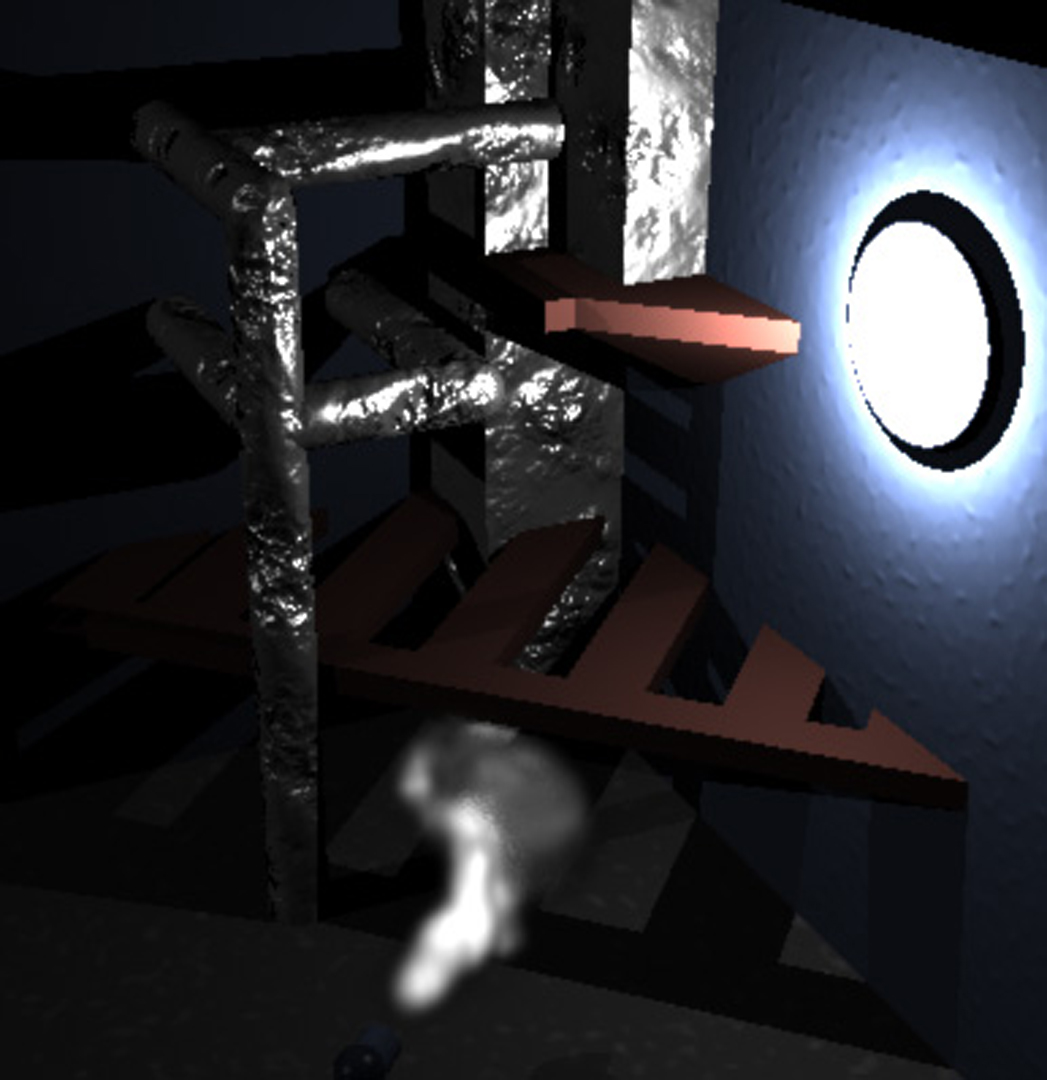“Modeling the motion of a hot, turbulent gas” by Foster and Metaxas
Conference:
Type(s):
Title:
- Modeling the motion of a hot, turbulent gas
Presenter(s)/Author(s):
Abstract:
This paper describes a new animation technique for modeling the turbulent rotational motion that occurs when a hot gas interacts with solid objects and the surrounding medium. The method is especially useful for scenes involving swirling steam, rolling or billowing smoke, and gusting wind. It can also model gas motion due to fans and heat convection. The method combines specialized forms of the equations of motion of a hot gas with an efficient method for solving volumetric differential equations at low resolutions. Particular emphasis is given to issues of computational efficiency and ease-of-use of the method by an animator. We present the details of our model, together with examples illustrating its use.
References:
1. Chiba, N., Ohkawa, S., Muraoka, K., and Miura, M., “Twodimensional Simulation of Flames, Smoke and the Spread of Fire”, J. of Vis. and Comp. Animation, 5(1), 1994, pp. 37-54.
2. Ebert, D.S., and Parent, R.E., “Rendering and Animation of Gaseous Phenomena by Combining Fast Volume and Scanline A-buffer Techniques”, SIGGRAPH ’90, Computer Graphics, 24(4), 1990, pp. 357-366.
3. Ebert, D.S., Carlson, W.E., and Parent, R.E., “Solid Spaces and Inverse Particle Systems for Controlling the Animation of Gases and Fluids”, The Visual Comp., 10, 1994, pp. 179-190.
4. Fletcher, C.A.J., “Computational Techniques for Fluid Dynamics,” Springer Verlag, Sydney, 1990.
5. Foster, N., and Metaxas D., “Realistic Animation of Liquids,” Graphical Models and Image Proc., 58(5), 1996, pp. 471-483.
6. Foster, N., and Metaxas D., “Controlling Fluid Animation,” Proceedings of CGI ’97, To appear, 1997.
7. Gritz, L., and Hahn, J.K., “BMRT: A Global Illumination Implementation of the RenderMan Standard”, J. of Graphics Tools, to appear, 1997.
8. Harlow, F.H., and Welch, J.E., “Numerical Calculation of Time-Dependent Viscous Incompressible Flow,” Phys. Fluids, 8, 1965, pp. 2182-2189.
9. Metaxas, D., “Physics-Based Deformable Models: Applications to Computer Vision, Graphics and Medical Imaging”, Kluwer-Academic Publishers, 1996.
10. Yaeger, L., Upson, C., and Myers, R., “Combining Physical and Visual Simulation – Creation of the Planet Jupiter for the Film “2010 .. , SIGGRAPH ’86, Computer Graphics 20(4), 1986, pp. 85-93.
11. Reeves, W.T., and Blau, R., “Approximate and Probabilistic Algorithms for Shading and Rendering Structured Particle Systems”, SIGGRAPH ’85, Computer Graphics 19(3), 1985, pp. 313-322.
12. Sakas, G., “Modeling and Animating Turbulent Gaseous Phenomena Using Spectral Synthesis”, The Visual Computer, 9, 1993, pp. 200-212.
13. Sims, K., “Particle Animation and Rendering Using Data Parallel Computation”, SIGGRAPH ’90, Computer Graphics 24(4), 1990, pp. 405-413.
14. Shaw, C.T., “Using Computational Fluid Dynamics”, Prentice Hall, London, 1992.
15. Shinya, M., and Fournier, A., “Stochastic Motion – Motion Under the Influence of Wind”, Proceeding of Eurographics ’92, September 1992, pp. 119-128.
16. Stam, J., and Fiume, E., “Turbulent Wind Fields for Gaseous Phenomena”, SIGGRAPH ’93, 1993, pp. 369-376.
17. Stam, J., and Fiume, E., “Depicting Fire and Other Gaseous Phenomena Using Diffusion Processes”, SIGGRAPH ’95, 1995, pp. 129-136.
18. Wejchert, J., and Haumann, D., “Animation Aerodynamics”, SIGGRAPH ’91, Computer Graphics 25(3), 1991, pp. 19-22.





